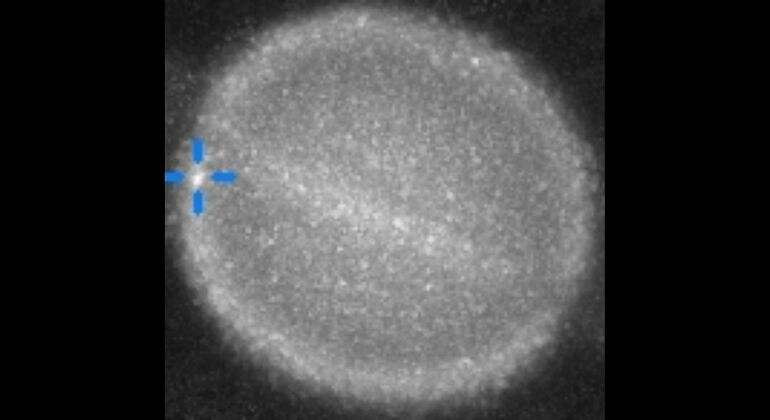What happened on Saturn? Astronomers are asking for help due to the possible impact on the gas planet.

Astronomers at the Planetary Virtual Observatory and Laboratory (PVOL) are asking for help after seeing an image taken by NASA member Mario Rana a few months ago that captured an unknown object colliding with Saturn.
PVOL is a database containing Earth-based observations of planets in the solar system, primarily made by amateur astronomers. These images are used by professional and amateur teams for astronomy research and outreach. PVOL is a service within the VESPA (Virtual European Space and Planetary Access) infrastructure.
Saturn, the sixth planet in the solar system, like Jupiter, is a gas giant . And like any other planet or entity in space , it's prone to impacts from meteorites or asteroids. But the difference between this planet and other planets like Earth is that after an impact, a crater forms: since it's composed of gas, the entire collision eventually disappears without a trace, or at least that's what researchers believe .
Never before in history has the impact of an object on a gas planet been recorded. While astronomers have their conjectures, as we mentioned, they are merely models and not scientific evidence.
"These new results imply that current small particle impact rates at Saturn are roughly the same as those at Earth—two very different neighborhoods in our solar system—and this is exciting to see," Linda Spilker, Cassini project scientist at NASA's Jet Propulsion Laboratory, explained in 2013. "It took Saturn's rings acting as a giant meteoroid detector—100 times the surface area of Earth—and Cassini's long tour of the Saturn system to address this question."

Although these impacts are relatively frequent—about 8,000 meteorites hit Earth each year— an object has never been observed hitting Saturn . At least not until now, since NASA's Mario Rana may have captured the much-sought-after images.
For this reason, the PVOL is asking for further assistance and research to confirm that the images taken indeed correspond to what they appear to be . They are therefore asking any astronomer who has observed these events to contact Marc Delcroix to provide their data and verify whether this is the first recorded impact on a gas planet.
eleconomista





